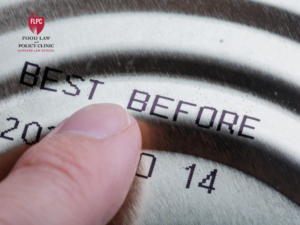Originally published by Waste Dive on July 11, 2018. Written by Cole Rosengren.
Dive Brief:
- The Senate’s latest Farm Bill draft—passed as the Agricultural Improvement Act of 2018 on June 28—still contains multiple relevant items on food waste, according to analysis by the Harvard Food Law & Policy Clinic.
- This includes $25 million in annual funding for composting and food waste reduction pilots with municipal governments in at least 10 states—with a 25% matching requirement. A new amendment would also create an Interagency Biogas Task Force to study a broad range of barriers and opportunities in the sector, including landfills and anaerobic digesters.
- Other notable items for the industry include a USDA study on the volume and cost of food waste, with the provision that agency programs “do not disrupt existing food waste recovery and disposal by commercial, marketing, or business relationships.” Multiple other items regarding spoilage prevention, food recovery and donation liability protections are also included.
Dive Insight:
While no new items can be introduced during conference committee negotiations with the House, the inclusion of even some of what’s currently in there would mark a new level of federal action on food waste.
Waste and recycling issues rarely get national attention, but recent events show that food waste may present a rare opportunity for bipartisan collaboration. USDA Secretary Sonny Perdue has pledged to make the issue a priority. Reps. Chellie Pingree, D-Maine, and David Young, R-Iowa, even launched a new Food Waste Caucus in May. Many of the relevant items in this Farm Bill draft came from legislation introduced by Pingree and others, including the Senate’s bipartisan-sponsored Food Donation Act, and have helped inform the conversation.
This level of federal attention makes sense, given the USDA and EPA goal of cutting food waste 50% by 2030, though some in the field had begun to wonder if it was still possible given the current political climate.
In a June interview during the U.S. Food Waste Summit at Harvard, the USDA’s Elise Golan told Waste Dive there was “no reason” this issue couldn’t fit into President Trump’s goals. “This really is about making American farmers stronger, American consumers stronger and utilizing everything that we are producing to its highest value.”
The summit had plenty of focus on how to maximize upstream reduction — in line with the EPA’s food recovery hierarchy—but also growing recognition that processing infrastructure investment was still needed. CalRecycle’s cap-and-trade model of funding projects has proven popular, so much so that the agency is looking for ways to potentially form philanthropic partnerships to enhance its reach. New York’s Department of Sanitation commissioner spoke about the need to prove a policy’s longevity to attract processing investments. Other conference sessions touched on how state policies, including disposal bans, can help incentivize this.
While all involved recognize that the 2030 goal is lofty, and the voluntary programs introduced so far may not be enough to achieve it, they also view this as an evolving conversation across all levels of government. If the final Farm Bill does include both federal research and local funding, it will be a notable step on the long road toward ending the food waste epidemic.

Health Law & Policy, Commentary
Cuts to the Federal Workforce and Medicaid: What’s Happening and What Can Advocates Do? – Health Care in Motion
March 12, 2025